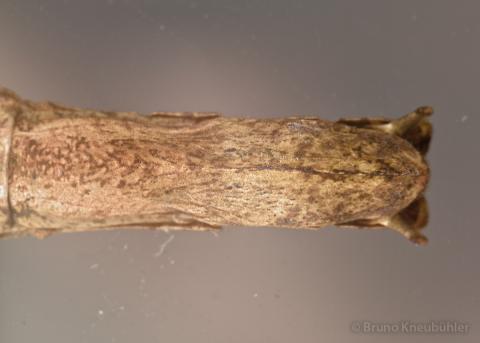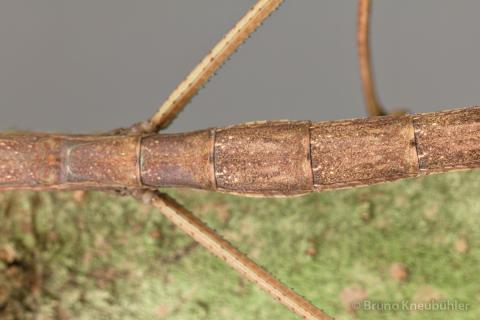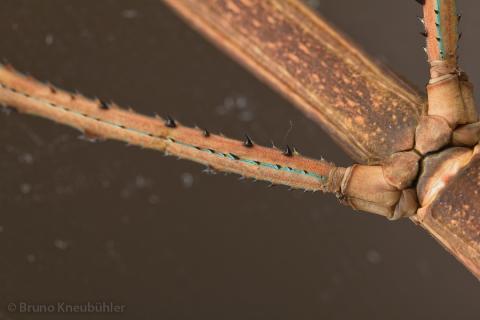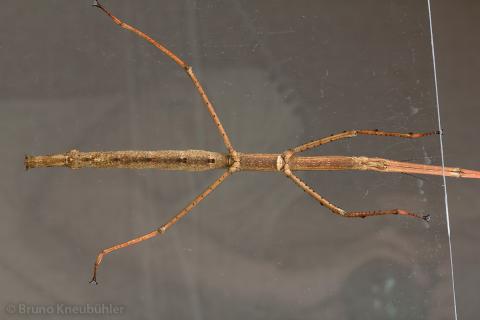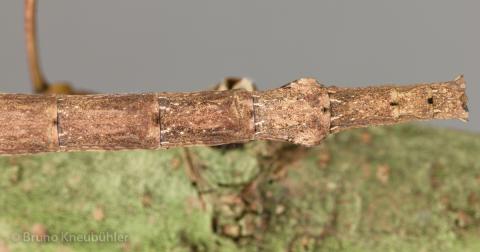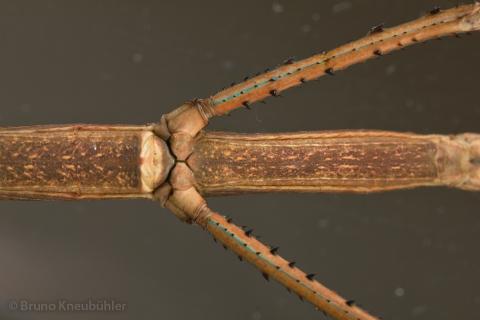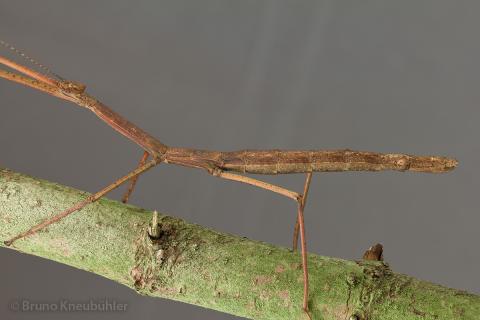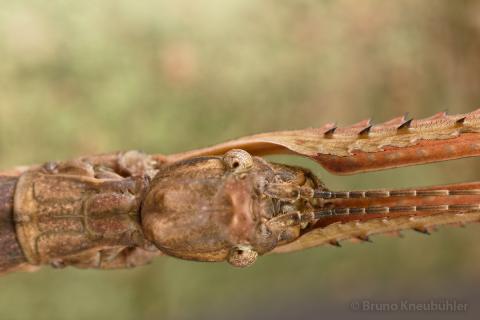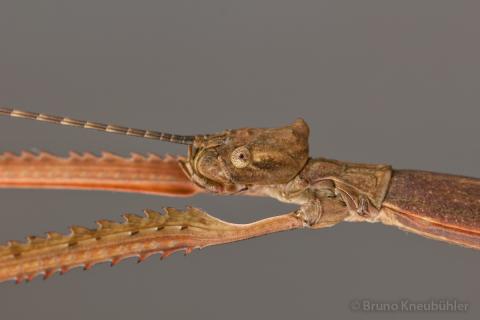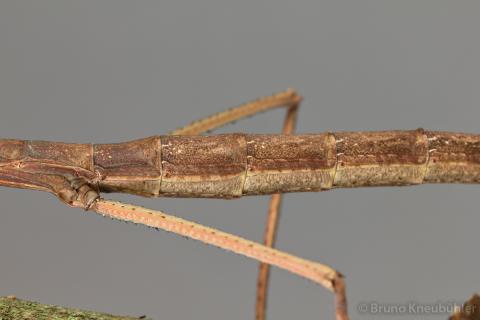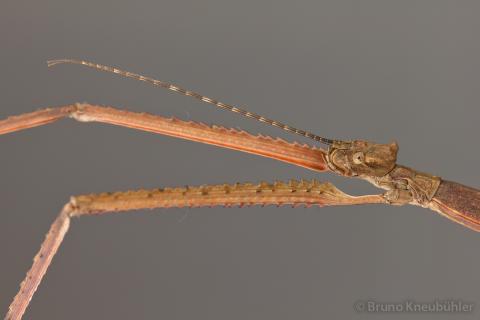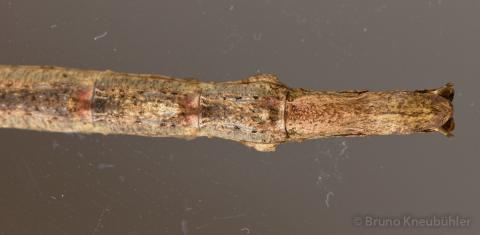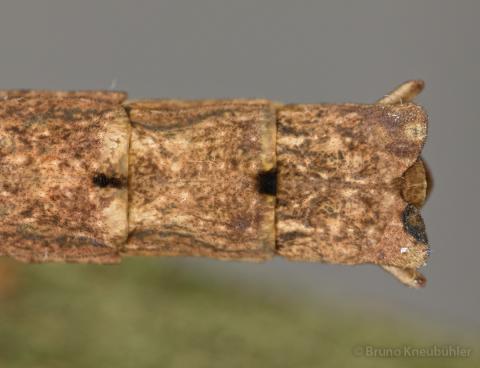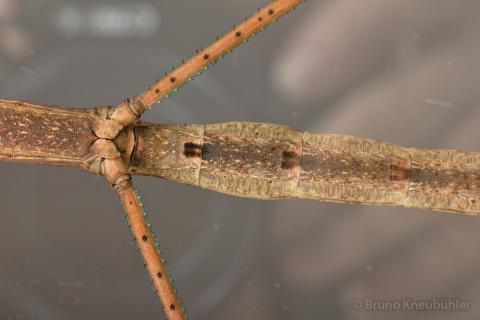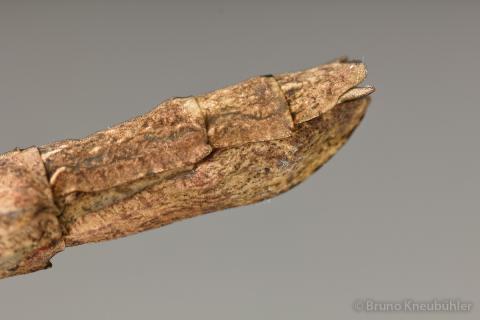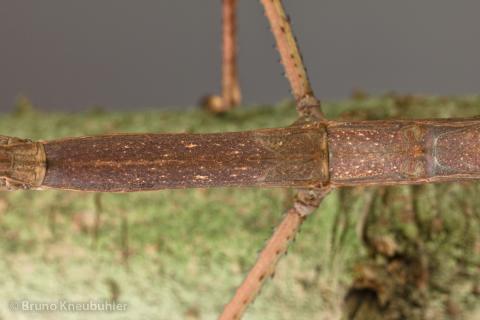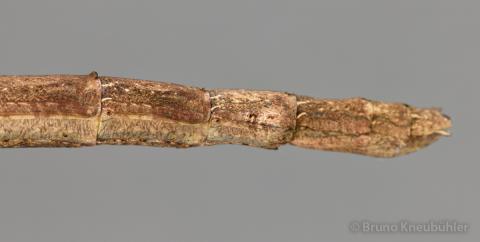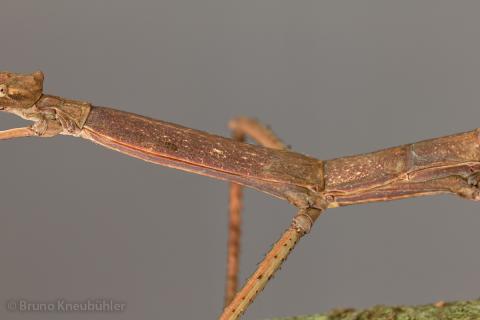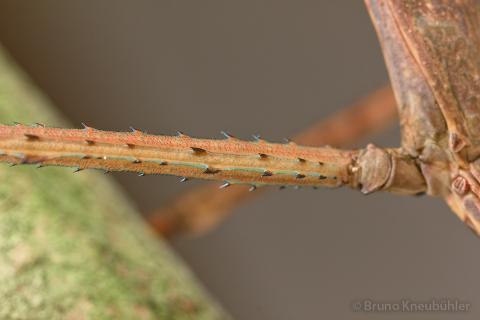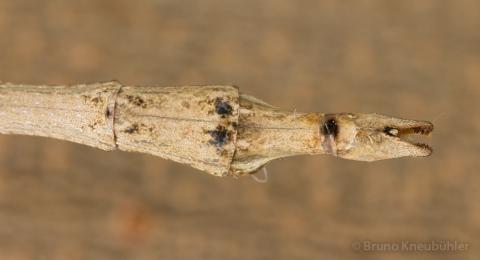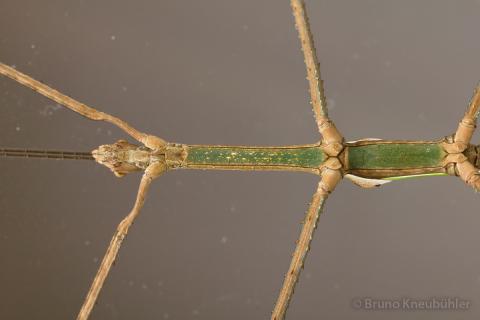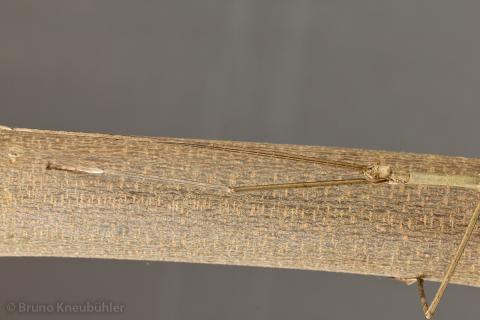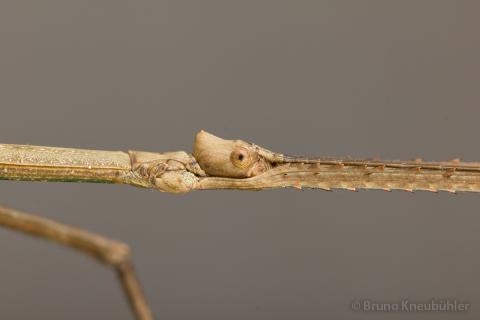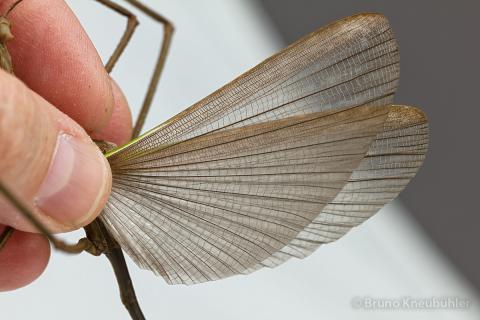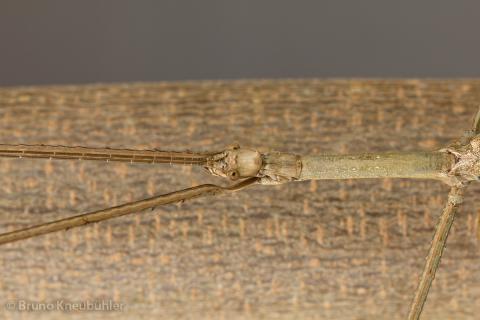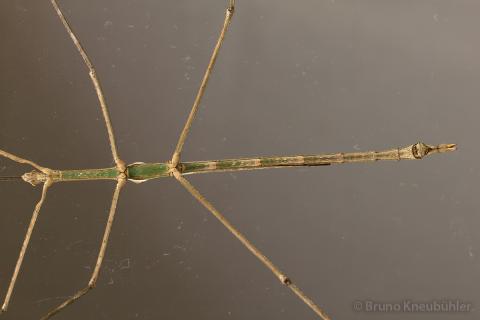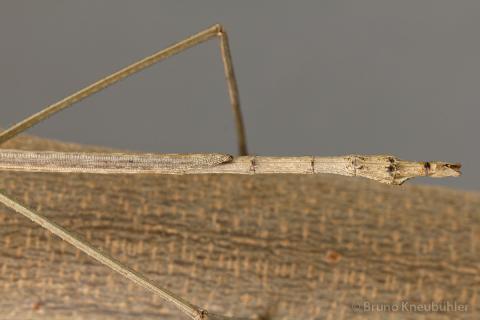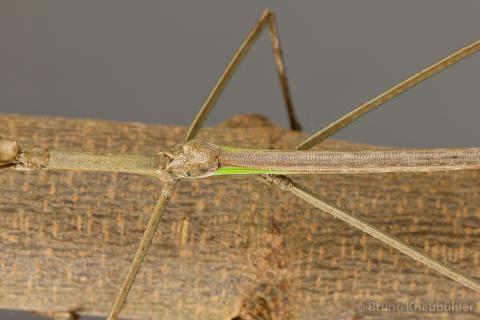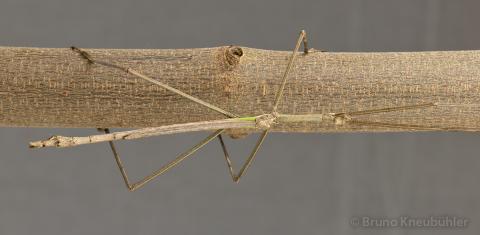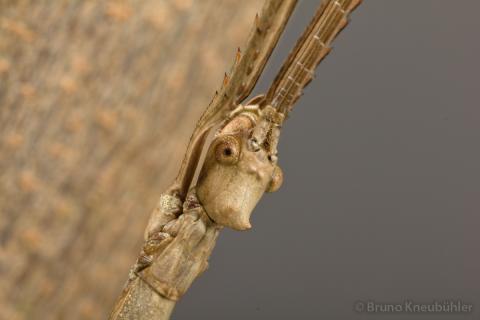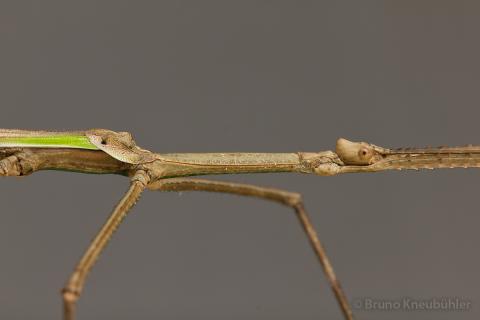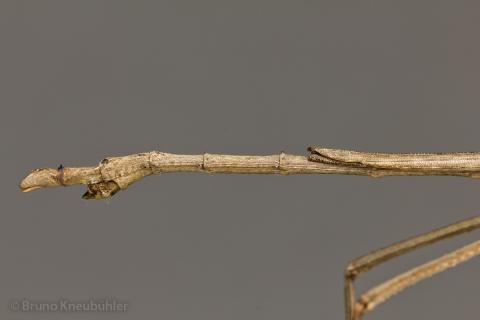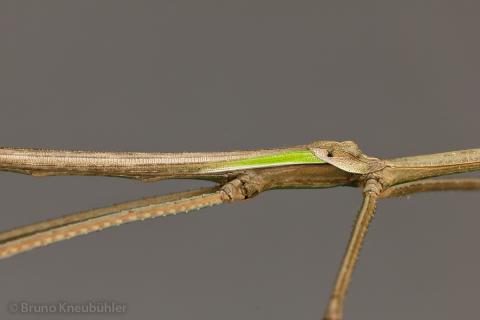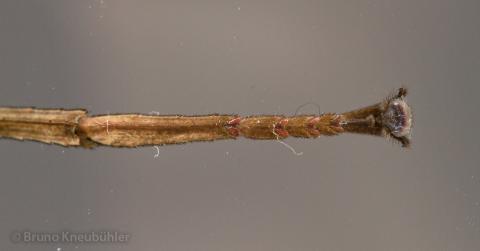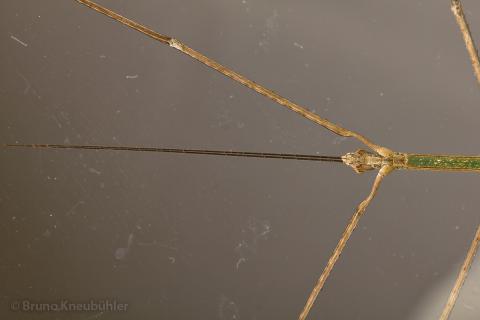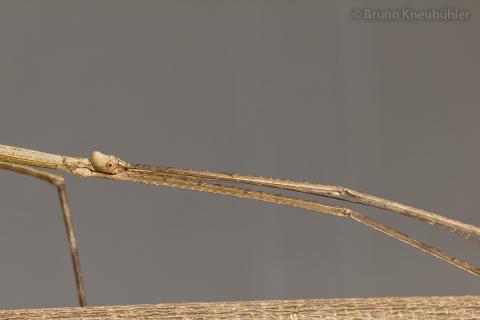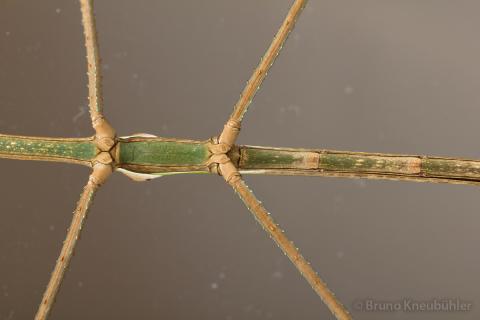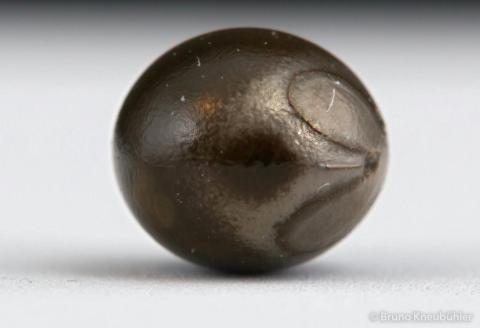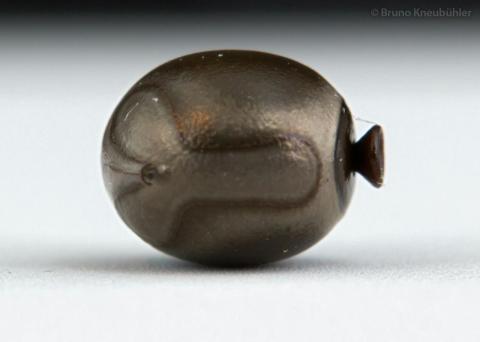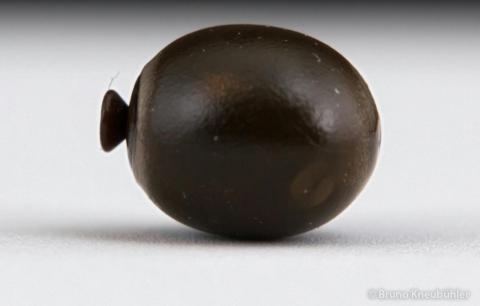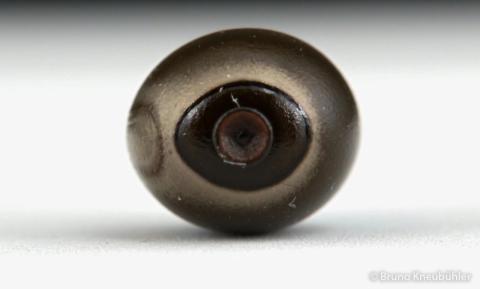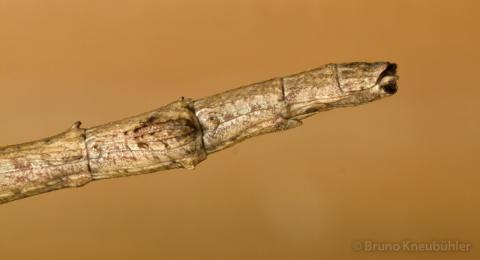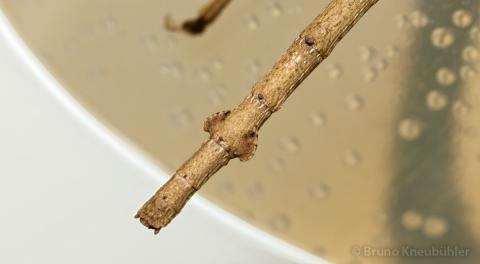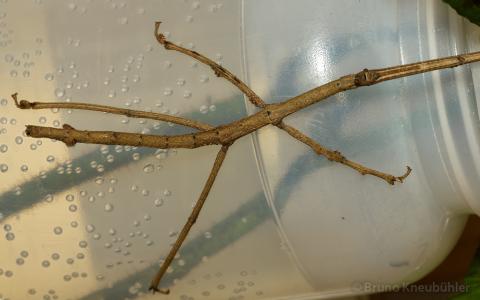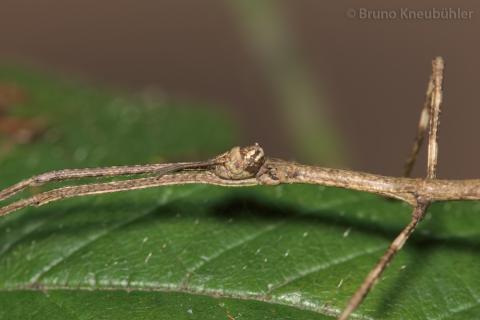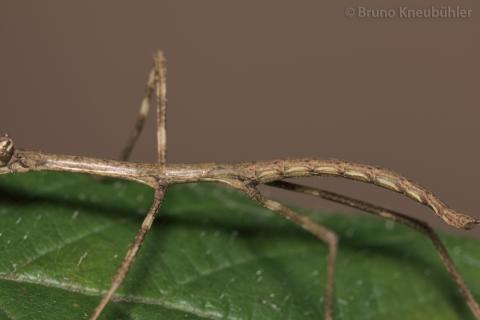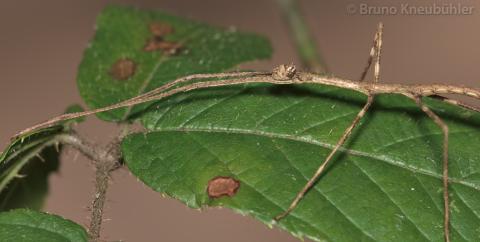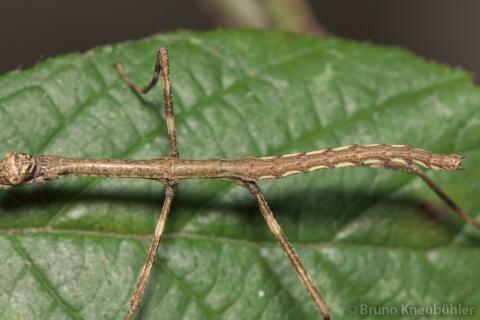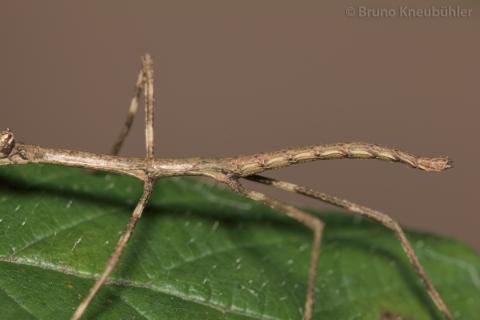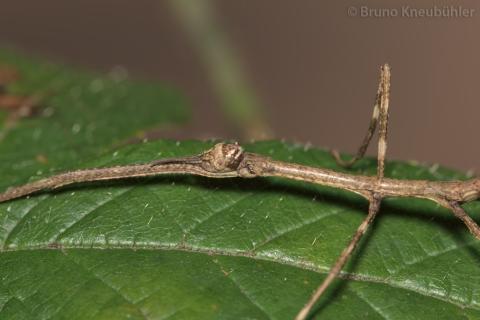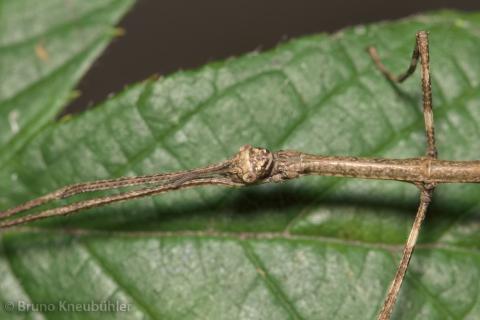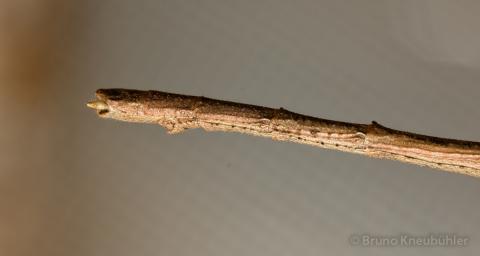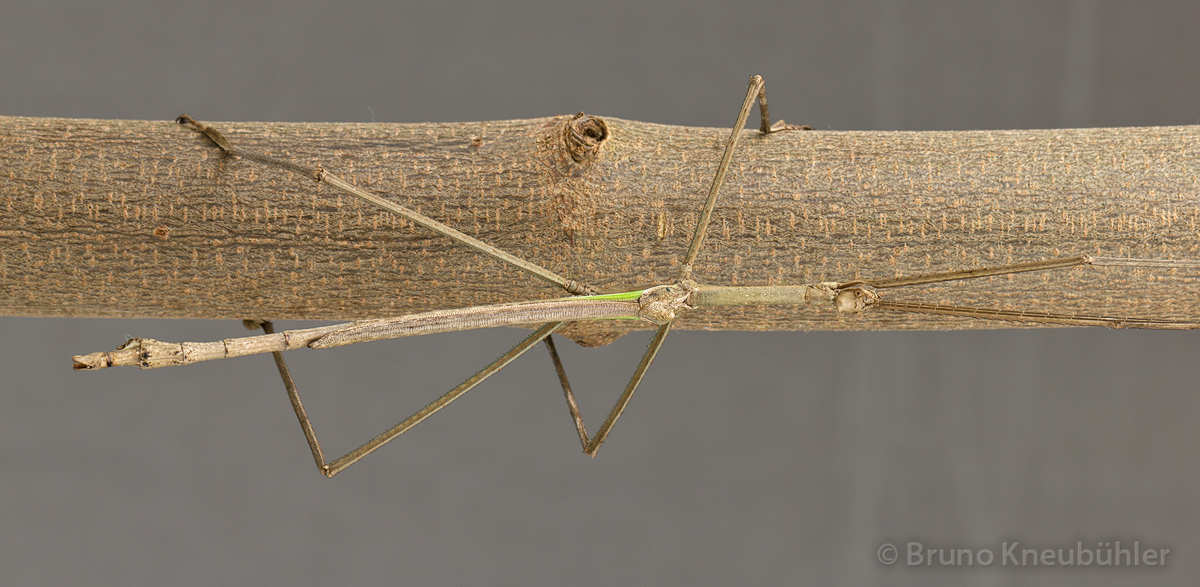
Genus
Species
Stock
CLP
133
PSG
203
Culture status
In culture
Foodplants
Bramble (Rubus spp.)
Breeding notes
(by Bruno Kneubuehler)
General Notes
- Redtenbacher described this species as Pharnacia biceps (1908)
- 2012 - first successful culture by Bruno Kneubuehler
- 2012 - this species has been distributed as Tirachodea biceps „Java“
_________________
Origin
- Java
_________________
Females
- big phasmids
- about 19 – 20 cm long
- colored in different red-brown shades
- 2 bumps on the hind head
- legs with many spines
- antennae about half as long as the forelegs
- no winged (apterous)
_________________
Males
- typical phasmids
- about 12 – 14 cm long
- body and legs mainly brown
- two distinct bumps on the hind head
- lateral area of the hindwings with a light green area
- ventral side of thorax and some area of the ventral side of the abomen are green
- legs with many spines
- antennae shorter than the forelegs
- fully winged
- membranous part of hind wings (alae) is transparent, grey and with dark veins
_________________
Nymphs
- about 25 mm (L1)
- the two bumps on the hindhead are already present (L1)
- braun (L1)
- antennae short
- by L1 it is quite easy to draw a distinction between ♀♂ (by the naked eye)
_________________
Eggs
- about 4 x 4 mm
- dark-brown with almost white areas
- glossy
- roundish
- capitulum is very distinctly on egg lid (operculum)
- micropylar plate big and very typically shaped for the genus
_________________
Food Plants
- bramble (Rubus sp.)
is very well accepted by freshly hatched nymphs, older nymphs and adults - no other food plants have been tested by me (so far)
_________________
Behaviour
- nymphs and adults react rather frantically when they feel threatened (like when they are touched). They drop down, wriggle about and freeze again after a few steps
- otherwise nymphs as well as adults are passive during the day and they usually feed during dawm / night
- males can fly, their flight appears rather clumbsy and is quite short
- matings occur during the night and couples stay together for a few hours only
- a defensive spray has not been observed
_________________
Developement
- incubation time (HH-incubation on slightly damp sand at 20 - 23 °C) is about 3 - 4 months (F1)
- spread some dried (!) moss over the eggs - this will make it much easier for the nymphs to hatch unscathed and it also reduces mould growth to some extend
- hatching ratio in F1 was very high (> 50%)
- males will be adult after about 3.5 months (at 20 – 23°C), females after about 4 – 4.5 months
- females start laying eggs after about 2 – 3 weeks
- eggs are flinged away forcefully - with a swing of the abodmen
- about 30 – 40 eggs per female and week
- adults can live for several months
_________________
Breeding Notes
- my general notes on how to breed phasmids are a integral part of this care sheet ...
- it is very easy to breed this species
- as the freshly hatched nymphs are already quite big, therefore the incubation container should be big enough
- keep the nymphs in a cage with good ventilation, but take care that the humidity does not drop too low
- a constantly wet paper towel on the floor of the cage helps raising humidity
- a humidity level of about 65 % rH (or higher) seems to support a healthy growth very well
- nymphs can be kept in a Faunabox (or similar cages)
- move nymphs to a bigger cage as they grow bigger
- a cage of at least 40 x 40 x 60 cm (high) should be provided for 2 couples of this species
- generally I advise to keep different phasmid species seperately (unfortunately, overcrowed cages are still too common ...)
- I have never sprayed nymphs, adults or their cage with water
- make shure that nymphs, which are about to undergo their adult moult, do not find places in the cage which would not offer them enough space beneath to moult successfully
